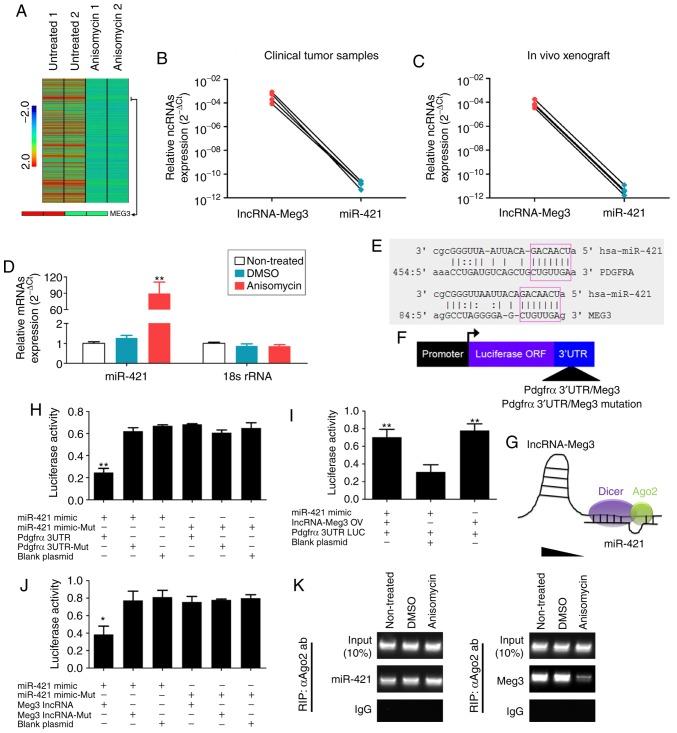Figure 9.
Anisomycin attenuates the molecular sponge effect in the lncRNA-Meg3/miR-421/PDGFRA axis. (A) Heatmap showing that the expression of lncRNA-Meg3 in the anisomycin-treated group was significantly lower than that of the control group. (B) Expression levels in clinical tumour samples and (C) in xenograft tumours suggest an inverse trend in expression for lncRNA-Meg3 and miR-421. (D) Expression levels of miR-421 in HuOCSCs following anisomycin treatment. **P<0.01 vs. non-treated (n=4). (E) Schematic of the complementary sites of mature miR-421 and the 3'UTR of lncRNA-Meg3 and PDGFRA mRNA. (F) Schematic of the structure of luciferase reporter plasmids. (G) The molecular sponge effect of lncRNA-Meg3/miR-421/PDGFRA. (H-J) Results of the luciferase reporter assays. **P<0.01 vs. blank plasmid (n=3). (K) RIP results revealed that the binding between Meg3 and Ago2 decreased significantly following treatment of HuOCSCs with anisomycin. lncRNA, long non-coding RNA; Meg3, maternally expressed 3; miR, microRNA; PDGFRA, platelet derived growth factor receptor α; HuOCSCs, human ovarian cancer stem cells; RIP, RNA immunoprecipitation; Ago2, argonaute 2; ORF, open reading frame; UTR, untranslated region; mut, mutant; IgG, immunoglobulin G.

